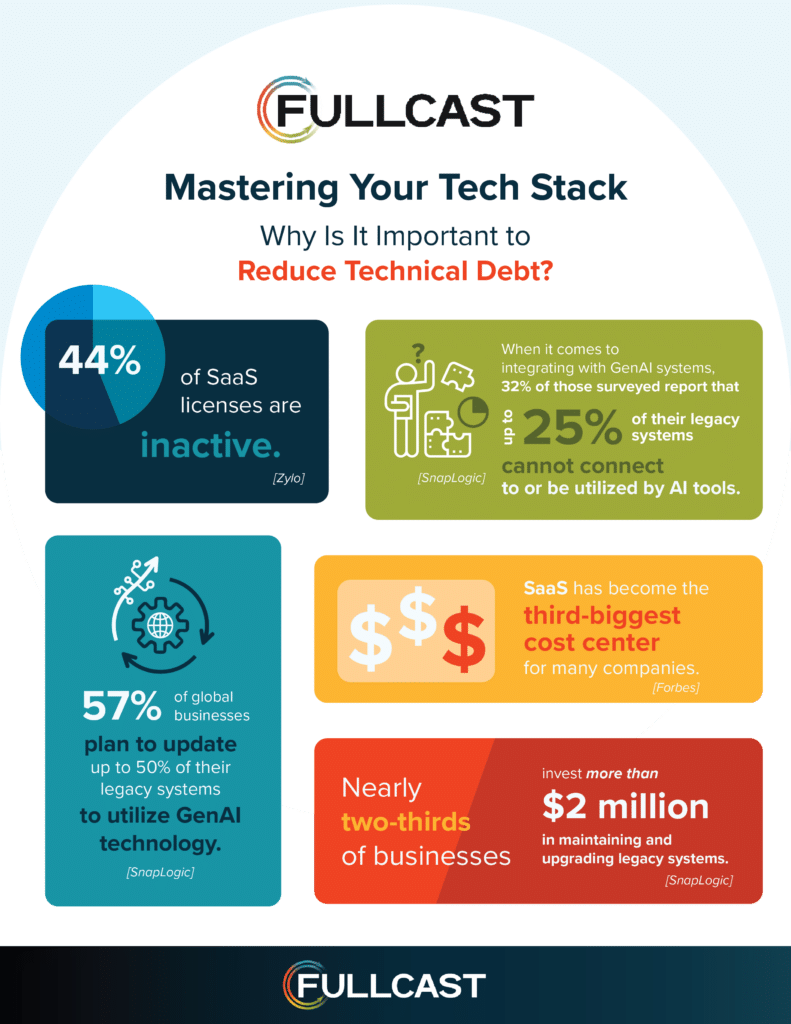Do you know how much your tech stack is costing you? Are you using legacy systems? Paying for too much data storage? Are you paying for redundant tools or relying on a single vendor that is hiking costs for services? These factors contribute to technical debt.

- Forty-four percent of SaaS licenses are inactive. [Source: Zylo]
- SaaS has become the third-biggest cost center for many companies. [Source: Forbes]
- Nearly two-thirds of businesses invest more than $2 million in maintaining and upgrading legacy systems. [Source: SnapLogic]
- When it comes to integrating with GenAI systems, 32 percent of those surveyed report that up to 25 percent of their legacy systems cannot connect to or be utilized by AI tools. [Source: SnapLogic]
- Fifty-seven percent of global businesses plan to update up to 50 percent of their legacy systems to utilize GenAI technology. [Source: SnapLogic]
By addressing technical debt, you can cut unnecessary costs associated with maintaining outdated systems while improving efficiency. Plus, streamlining workflows becomes more achievable with an optimized tech stack. The result? Smoother operations and better productivity.
How?
Re-evaluating your tech stack is easier than you think. Here are the steps we recommend.
6 Steps to Reduce Technical Debt
- Outline your processes and define the success criteria
- Conduct an audit (include a team survey)
- Identify and prioritize cross-functional tools (highlight redundancies)
- Map out tech stack architecture, including integration strategy
- Share documentation for internal feedback/validation
- Plan and execute your go-forward transition strategy (vendor contracts, migration implementation, and change management/training timelines.
Anything that does not provide your team with flexibility, scalability, enhanced reporting and analytics, and consistent support and training should be carefully considered for culling.
When?
Any time is the right time to update your tech stack, but it’s recommended prior to any GTM planning for the next FY.
Managing technical debt ensures that your organization remains agile, secure, and ready to adapt to future challenges. Have questions? We are here to help.











